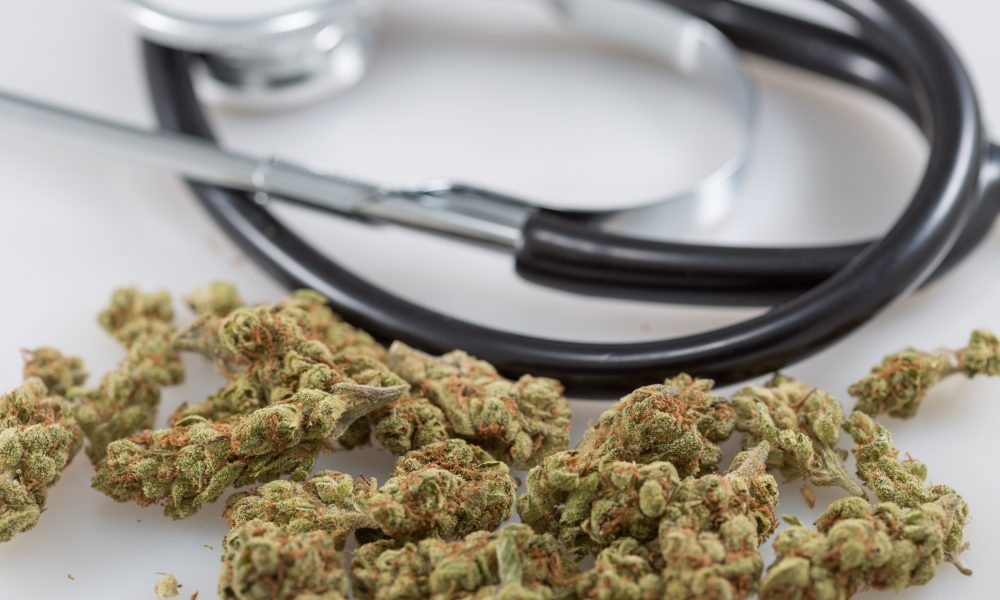A new study suggests that some lesser-known cannabinoids produced by hemp and marijuana—with names like THCV, CBDV, CBC, CBM and CBN—may help treat dermatological diseases such as psoriasis, eczema and acne.
“The findings of this review suggest that minor cannabinoids hold therapeutic promise in the management of dermatological diseases,” says the study, published this week in the peer-reviewed journal Molecules. “Incorporating minor cannabinoids into dermatological therapies could potentially offer novel treatment options of patients and improve their overall well-being.”
To reach those conclusions, Polish researchers Emilia Kwiecień and Dorota Kowalczuk reviewed existing literature published in scientific journals and found that minor cannabinoids “exhibit diverse pharmacological activities, including anti-inflammatory, analgesic, antimicrobial, and anti-itch properties.” Some studies “reported their efficacy in mitigating symptoms associated with dermatological diseases such as psoriasis, eczema, acne and pruritus,” authors noted.
Certain minor cannabinoids seemed to be especially suited for treating specific diseases. “CBDV, with its anti-inflammatory properties, can be used to alleviate skin symptoms such as itching and swelling in the treatment of” atopic dermatitis (AD), the authors wrote, for example. The cannabinoid also, “due to its anti-inflammatory and antioxidant properties, can have a healing effect on acne lesions.”
“Other recently discovered cannabinoids such as CBM and CBE have also demonstrated anti-inflammatory potential,” the study continues. “They represent a novel alternative for conducting scientific research regarding specific disease conditions. Similarly, CBC, with its anti-inflammatory and antioxidant effects, may have a beneficial impact on the treatment of acne, psoriasis and AD.”
THCV, meanwhile, “shows many promising properties in combatting acne,” as it may help regulate sebum production. It also “exhibits anti-inflammatory and antibacterial properties that can help alleviate inflammation and combat the bacteria responsible for acne development.”
All told, researchers identified possible therapeutic applications of the minor cannabinoids CBDV (cannabidivarin), CBDP (cannabidiforol), CBC (cannabichromene), THCV (tetrahydrocannabivarin), CBGA (cannabigerolic acid), CBG (cannabigerol) and CBN (cannabinol), as well as more recently discovered cannabinoids CBM (cannabimovone) and CBE (cannabielsoin).
The effects are believed to be the result of cannabinoids interacting with the body’s endocannabinoid system, “a central regulatory system responsible for maintaining the health and proper functioning of almost every organism,” the study’s authors explain. “Increasing evidence suggests that endocannabinoid signaling plays a crucial role in regulating biological processes in the skin. Many skin functions, such as immune response, cell proliferation, differentiation, and survival, are at least partially regulated by the endocannabinoid system, and suppressing skin inflammation is one of its strongest functions.”
Topical applications of minor cannabinoids may even help mitigate the effects of aging, the study said.
Authors emphasized that more research is needed on minor cannabinoids “to confirm their effectiveness and safety,” but acknowledged there are still barriers to progress.
“The impact on the nervous system, issues pertaining to product quality and regulation, as well as ethical and legal aspects, including those concerning legality, require comprehensive consideration,” they wrote. “Therefore, despite the promising therapeutic prospects, the utilization of cannabinoids, especially the minor cannabinoids, necessitates further research, regulations and a balanced approach to ensure benefits while minimizing potential health and societal risks.”
Patients Say Marijuana Treats Neuropathy Just As Well As Opioids, And Most Report Using High-THC Cannabis, New Survey Finds
Read the full article here









